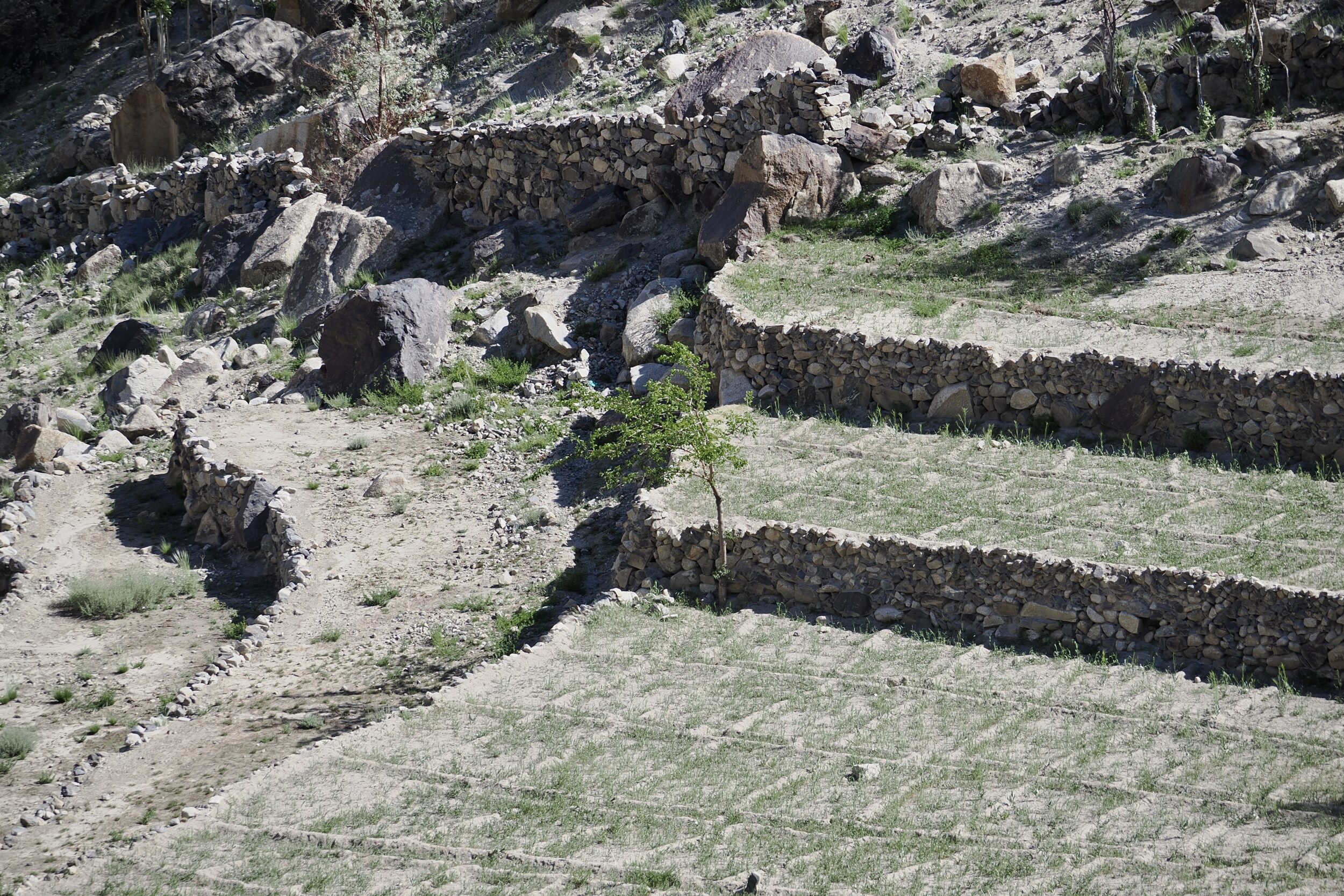This post’s photo was taken less than one minute after the previous post’s.
For the “#19” image I was looking west-ish, back over my shoulder, and up.
For this post’s photo I looked ahead – east-ish, downhill, and over to the other (non-Indus) side of the road.
Most of Gilgit-Baltistan’s substantial settlements – and agricultural land – are in relatively low places, near rivers that run along the “floors” of deep Karakoram valleys.
Generally, these are places where very little rain falls; often, the average annual total is below 100 mm.
The actual total is hugely variable, from one year to another.
Arable/potentially-arable land is very scarce.
All local agriculture is irrigation-dependent, and requires a prodigious amount of maintenance, almost all which is done manually.
Extracting irrigation water from valley floors’ rivers has generally proved impracticable – such rivers variously roar, flood, freeze over, or – intermittently – barely trickle, midst millions of tonnes of the silt, sand and rock that they have transported, then deposited.
The depth, width, and “flow” of such rivers can vary by colossal margins..and very suddenly.
Only land that is well out of such rivers’ destructive reach is even potentially arable.
Making it arable involves oft-Herculean effort by small-scale farmers.
Their irrigation water is “harvested” from the glaciers above – a gravity-assisted process.
For at least the last several centuries, an intricate network of unlined channels (“kuhls”) has gathered meltwater, and then ensured its gentle, non-destructive delivery to the region’s thousands of mostly-petite, individual-family-operated farms/orchards.
Any particular irrigated “plot” is usually part – or all – of a single, small-scale, individual enterprise.
However, the development and maintenance of such traditional “kuhl” irrigation systems has always required a great deal of co-operative effort; if Margaret Thatcher’s “no such thing as society” view held true, kuhl systems simply could not exist.
A few decades ago, “modernisation”, “the coming of ‘proper’ roads”, and “population drift to cities” were related/key factors in the decline of kuhl irrigation systems, most especially glacier-fed kuhl systems.
Now, climate change is the most obvious threat to their continued existence in the Karakoram, Himalaya and adjacent highlands.
Across Asia’s high mountains, glaciers are retreating.
Many smaller glaciers appear to be dying.
Some have already died.
Most glacier-fed kuhl channels gather their water from smaller glaciers.
The desiccated appearance of the pictured plots would suggest that when I took the photo on 15 May 2024, some farmers were still “wishing and hoping”…waiting to discover whether their kuhls would this year deliver “enough” water from the relevant glacier.
Click here for an explanation of glacier-fed kuhl irrigation systems: the Wikipedia entry refers to an Indian mountain valley, but the irrigation system is the same kind.
Click this for an article about a climate-change-aware Indus Valley project, in northern Pakistan’s Gilgit-Baltistan region.
It proposes a (perhaps) “more efficient” irrigation system which would draw water from the rivers on the “floors” of Karakoram valleys.
